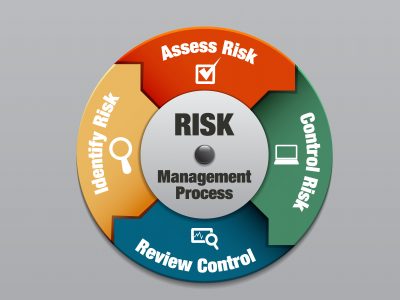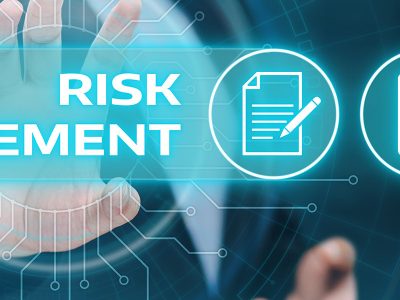Urban areas have been expanded exponentially in recent areas. Along with this, few towns are being developed as suburban regions, but not as fast as urban areas. It is expected that about 68% of the world population will be living in cities by 2050 (United Nations Department of Economic and Social Affairs, 2018). These urban areas will face the immense risk of disasters due to the population and available resources. The Impact of a disaster is the loss of our resources, livelihood, and existing infrastructure which will have to be controlled with the help of disaster risk management techniques.
In recent times, the disasters were considered to be unforeseen stress, and measures like relief camps, and financial assistance for living and resettlement were taken to mitigate them. Several governmental authorities have started developing an action plan for disaster risk reduction to reduce the risk of injuries, casualties, and loss of wealth when a hazard or disaster occurs. During such hazards, urban areas become vulnerable to devastation since large concentrations of people are managed with limited emergency services and low capacities.
As we cannot prevent the occurrence of natural hazards, they are escalated further by human interventions and unplanned development- creating more risks while managing the hazards and disasters. We can check and act on certain anthropogenic activities that increase the frequency of hazards to reduce their impact on population and wealth. Several international organizations recommended Disaster Risk Management (DRM) and Disaster Risk Reduction (DRR) to focus on urban planning and on sustainable development to resist and reduce the risks with the help of strong infrastructure and funding systems and by understanding the vulnerabilities, potential causes, and effects, economic and social impacts, mitigation plans, preparedness and response.
Urban areas are prone to these disasters:
- Urban Floods
- Urban Fires
- Earthquakes
- Heat island effect
- Epidemic and pandemic breakout
- Emission of hazardous gases
Risk is an expected occurrence of failure of any functioning or management operations that are harmful to life, social and economic activities. Risk increases with the increase in vulnerabilities that often intensifies the impact of hazards and disasters.
The Risk assessment process involves analysis and evaluation of existing conditions and interactions that interpret the nature and extent of damages from risks. It is based on a data set of features such as location, frequency, intensity, physical features, social demographics, economic structure, etc., collected from interviews, existing data sets. This assessment identifies the risk factors that help in improving the measures and management to reduce the risks and decision-making.
Certainly, there are challenges in developing assessments like limited research and understanding of methodology, institutional members, budget allocation, etc.
- Location of hotspots in town based on seismic data, flood data, rainfall patterns, geotechnical data.
- Data of engineered and non-engineered structures for safety and capacity evaluation.
- Social and economic inequalities, vulnerable groups for accessibility, and extent of measures.
- The Capacity of Urban infrastructure such as sewage system, drainage system, water supply, roads, hospitals, fire safety, etc.
- Urban governance, policies, enforcement, and public participation in sustainable development.
- Insurance and funding assistance factors will reduce considerable stress on the economic activities to start all over for reconstruction and resettlement.
Disaster Risk Reduction can be achieved by preparedness and preventive measures on risk factors, monitored by risk management systems. Key areas to focus on while planning and implementation are-
- Construction: Large-scale utility projects with huge investments are constructed such that it ensures flood protection, earthquake resistance, fire protection, and safe access to emergency services, etc., by structural design and quality control in construction practices. These construction practices and building codes as per the standards set by government authorities need to be promoted to get awareness.
The research on provisions is to be extended for review according to the changes in demographics. Declaration of incentives to promote safe and sustainable constructions on areas that were specified on hazards and vulnerabilities. Following are few coral provisions for construction –
- IS 1893(Part 1):2002 `Criteria for Earthquake Resistant Design of Structures: Part 1 General provisions and Buildings’ (Bureau of Indian Standards)
- IS 13827:1993 Improving Earthquake Resistance of Earthen Buildings – Guidelines (Bureau of Indian Standards)
- IS 13828:1993 Improving Earthquake Resistance of Low Strength Masonry Buildings – Guidelines (Bureau of Indian Standards)
- IS 13935:2009 Seismic Evaluation, Repair and Strengthening of Masonry Buildings – Guidelines (Bureau of Indian Standards)
- IS 13920:1993 Ductile Detailing of Reinforced Concrete Structures Subjected to Seismic Forces – Code of Practice (Bureau of Indian Standards)
- SP 7: 2016 National Building Code of India 2016 (NBC 2016) (Bureau of Indian Standards)
Guidelines on disaster management by National Disaster Management Authority (National Disaster Management Authority, Government of India)
- Epidemics: An epidemic is usually confined to a region having a focal point. When the risk of transitivity is intensified, that is, it can cover a large number of regions, it becomes a pandemic which is more turbulent than epidemics. They also occur after the hazards due to mismanagement in relief and rehabilitation.
To assess the risks in epidemics for future-
- Time taken to realize the health condition.
- What and Which type of measures were adopted out of possible measures based on the urban scenario.
- When to start vaccination? Either supervise on disease changes or vaccination before the breakout.
- The Capacity of patient occupancy and medical service availability per person in that area.
- Classification of population based on age, gender, medical conditions, living conditions, medical accessibility etc.
- Supply of water and sanitation arrangements, solid waste disposal system.
Epidemic examples:
- Nipah virus outbreak in Kerala, India in 2018. (WHO)
- Ebola virus outbreak in the Democratic Republic of the Congo in Africa in 2018. (WHO)
- Pandemic examples:
- Coronavirus Covid 19 pandemic worldwide in 2019. (WHO)
- Fire Accidents at Public places, LPG stations, and petrol pumps, slum areas, residential buildings, commercial buildings, chemical plants, etc., cause serious injuries and loss of wealth. Further resettlement and redevelopment with lost employment and personal wealth challenge the livelihood economic growth and health disorders.
Few indicators to assess the risks in fire mitigation and management at urban areas-
- Population occupancy per household per area.
- Availability of firefighters and services for the population and buildings in that area.
- Data of buildings with poor fire safety and safe building standards.
- Constraints inaccessibility of emergency like road, water drawing power, site accessibility conditions, etc.
- Evacuation and escape routes availability.
- Unauthorized unsafe electrical connections and in-house wiring – risks of short-circuiting leading to fire accidents.
- Unsafe storage of hazardous and flammable substances.
- Industries with less fire protection and fighting services without safety preparedness.
- Illegal operations and unsafe working conditions at flammable materials storage and handling.
- Lack of standard operating procedures and inspection on vulnerabilities.
Risk mitigation – Risks can be minimized by adopting disaster risk management methods like the fire detection and safety alert system with automatic water sprinklers to put off the flame. Establishment of fire pumps in the potential sites to draw at emergency services. Encouragement of fire-resisting building materials and fire extinguishers with water pumps within the building, awareness on evacuation and exit routes to the people. (Provide full knowledge of Emergency medical kits, Safety audits, and mock drills)
- Climate change is caused by manmade activities that stress the ecosystem creating unfavorable environmental conditions that slowly result in the occurrence of natural hazards. It affects the urban system indirectly by altering the demand and supply of food due to the impact on the production stage by shifting rainfall patterns, temperature effects, and wind patterns. It also changes the average temperature in the atmosphere, floods, droughts, and stress on water systems, and ecological imbalances.
Some indicators to assess the risks in climate change are–
- Future forecasts of temperature changes by reviewing the annual, decadal temperatures and their effect on sea levels.
- Temperature effect on melting of ice on mountains causing floods and cyclones.
- Pollution levels and Greenhouse gas concentrations in the atmosphere causing global warming.
- Probability of the occurrence of disasters.
- Urban infrastructure, living conditions, and preparedness for various natural hazards caused by climate changes. Particularly at the coastal areas and cities near rivers.
- The development activities and migration data at risk-prone areas in the city
- Groundwater levels to assess the aquifer’s capacity and recharge.
- Industries and factories usually dispose of hazardous waste into water sources and exhaust harmful gases into the people living near such emissions face health complications based on the toxic levels and the exposure. They are subjected to air pollution, sound pollution, and water pollution if unchecked. These settlements can be assessed for environmental audits and safety audits for planning and mitigation.
Few examples of risks and hazards from Industries and factories are,
- On 2nd December 1984, Bhopal Gas Tragedy occurred due to leakage of Methyl isocyanate (MIC) gas from Union Carbide India Limited (UCIL) a pesticide plant in Bhopal causing the death of about 4000 people and adversely affected the health of lakhs of people. Some of the post-disaster effects are still continuing (Byju’s).
- Gas leak from LG Polymers Pvt Ltd in Andhra Pradesh’s Visakhapatnam caused 12 deaths and 585 hospitalized 585 on May 7, 2020 (Bisht, 2020)
Urban resilience is the capacity of a system to resist the risks and impacts of hazards while still maintaining its function. It depends on the availability of essential assets and services during emergencies and post-hazard. They are flexible to function under different conditions so that they can convert assets or structures for emergency relief camps and services that can be accessed easily.
Such systems have infrastructure which is redundant and modulate services under extreme stress with minimal failures. They observe and try to reduce the stress of slow-onset challenges to avoid failures
To make the cities resilient to climate change:
- The city needs to be assessed for capacity, vulnerabilities, and available resources.
- Develop human skills or societal infrastructures within a community or organization to reduce the level of risk.
- In addition to this, capacity building also includes the development of institutional, financial, political, and other resources, such as technology at different levels and sectors of the society.
- To set up organizations like local authorities, public, NGO, private entities to address and work on risk reduction and awareness through information centers, media publications, meetings, etc,
- Build infrastructure and financial institutions for resisting and assisting during hazards and disasters.
- Measures to minimize the temperature and climate changes to reduce the emission of greenhouse gases and pollutants.
- Energy conservation codes need to be adopted and followed.
- Afforestation should be followed along with zoning out the areas to avoid settlements.
- Best drainage and sewerage plans need to be adopted to minimize the risk of urban floods.
- Zoning and protecting the natural drainages and catchment areas from dwellers and settlements.
- Hotspot analysis and prioritizing the services as well as development activities.
- To develop a casualty management system for safe disposal and to provide prioritized services during hazards according to the severity of injuries and chances of survival for best utilization of available resources without any social discriminations.
United Nations Department of Economic and Social Affairs. 2018. 68% of the world population projected to live in urban areas by 2050, says the UN. United Nations Department of Economic and Social Affairs. [Online] May 16, 2018. https://www.un.org/development/desa/en/news/population/2018-revision-of-world-urbanization-prospects.html.
Bureau of Indian Standards. INDIAN STANDARDS ON EARTHQUAKE ENGINEERING. Bureau of Indian Standards. [Online] [Cited: June 30, 2021.] https://bis.gov.in/other/quake.htm.
—. National Building Code. Bureau of Indian Standards. [Online] [Cited: june 30, 2021.] https://bis.gov.in/index.php/standards/technical-department/national-building-code/.
National Disaster Management Authority, government of India. NDMA Guidelines. NATIONAL DISASTER MANAGEMENT AUTHORITY. [Online] [Cited: june 30, 2021.] https://ndma.gov.in/index.php/Governance/Guidelines.
—. Ebola virus disease. World Health Organisation. [Online] [Cited: June 30, 2021.] https://www.who.int/news-room/fact-sheets/detail/ebola-virus-disease.
—. Nipah Virus Outbreak in Kerala. World Health Organisation. [Online] [Cited: june 30, 2021.] https://www.who.int/southeastasia/outbreaks-and-emergencies/health-emergency-information-risk-assessment/surveillance-and-risk-assessment/nipah-virus-outbreak-in-kerala.
WHO. Coronavirus disease (COVID-19). World Health Organisation. [Online] [Cited: Jube 30, 2021.] https://www.who.int/emergencies/diseases/novel-coronavirus-2019.
Byju’s. This Day In History Dec – 02. Byju’s. [Online] [Cited: june 29, 2021.] https://byjus.com/free-ias-prep/this-day-in-history-dec02/.
Bisht, Digvijay Singh. 2020. Vizag gas leak: Curtain calls on the accountability of LG Polymers. DownToEarth. [Online] July 10, 2020. https://www.downtoearth.org.in/news/pollution/vizag-gas-leak-curtain-calls-on-the-accountability-of-lg-polymers-72222.
Blog Published by: Sai Teja, Student Risk Committee Member











